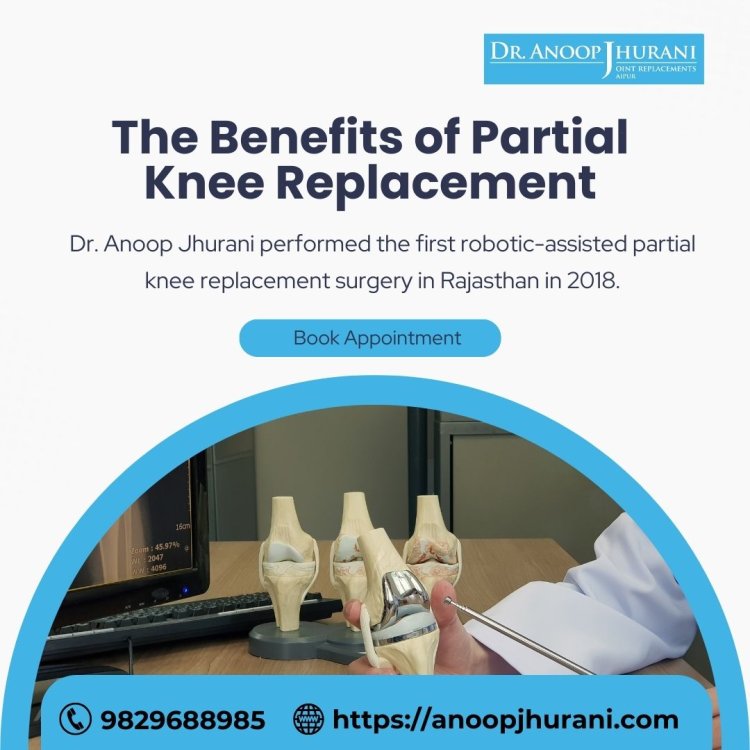The Benefits of Partial Knee Replacement
Dr. Jhurani is the best partial knee replacement in Jaipur. Partial knee replacement surgery can replace the only broken section of a knee.
Share this Post to earn Money ( Upto ₹100 per 1000 Views )

Knee pain can be a formidable barrier to an active lifestyle, limiting one's ability to engage in sports and other dynamic activities. However, recent advancements in orthopedic surgery offer a glimmer of hope for individuals seeking a solution that preserves their knee's natural functionality. Enter partial knee replacement, a surgical technique that selectively targets only the damaged part of the knee, leaving the healthy components intact.
Understanding Partial Knee Replacement: Traditional knee replacement involves replacing the entire knee joint with artificial components. However, in a partial knee replacement, only the damaged compartment of the knee is replaced with metal and plastic implants, leaving the unaffected portions untouched. This focused intervention allows for a quicker recovery, less trauma to surrounding tissues, and improved overall function.
The Ligament-Preserving Advantage: One groundbreaking aspect of partial knee replacement is the possibility of preserving crucial ligaments, such as the anterior cruciate ligament (ACL) and the posterior cruciate ligament (PCL). These ligaments play a vital role in stabilizing the knee joint and are crucial for maintaining normal function. By utilizing a ligament-preserving technique, surgeons can leave the ACL and PCL intact during the procedure. This preservation contributes to a more natural feeling in the knee and enables patients to retain a higher degree of mobility and stability.
Benefits for Young, and Active Individuals: Partial knee replacement with ligament preservation holds particular appeal for young and active individuals who wish to maintain an energetic lifestyle.
Here are some key advantages:
1. Preservation of Natural Knee Structure: Unlike total knee replacement, which involves substantial alteration of the joint, partial knee replacement retains the natural structure of the knee. This can lead to a more natural range of motion and function.
2. Faster Recovery and Rehabilitation: With only a portion of the knee being replaced, the recovery time for partial knee replacement is generally shorter compared to total knee replacement. This allows individuals to return to their active pursuits more swiftly.
3. Enhanced Joint Stability: The preservation of crucial ligaments contributes to improved joint stability. This is particularly beneficial for those engaging in sports that involve rapid movements, such as running, jumping, or pivoting.
4. Long-Term Durability: Partial knee replacement with ligament preservation has shown promising long-term results. The preserved ligaments may contribute to the longevity of the implant, making it a viable option for individuals looking for a durable solution.
Conclusion:
Partial knee replacement with a ligament-preserving approach represents a significant stride in orthopedic surgery, offering a tailored solution for individuals who wish to remain active and engaged in their favorite activities. By selectively addressing the damaged part of the knee and preserving crucial ligaments, this technique opens new possibilities for a more natural, functional, and enduring solution to knee pain. If you are considering knee replacement, consult with Dr. Anoop Jhurani to explore whether partial knee replacement with ligament preservation is the right fit for your lifestyle and goals.








![ViaHemp Gummies UK - [NEW UPDATED] Is It Safe To Use!](https://blog.rackons.in/uploads/images/202410/image_380x226_67178eaf06da4.jpg)